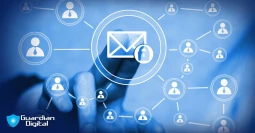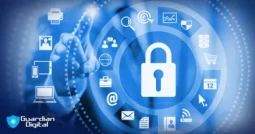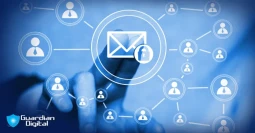How to Secure Mental Health Apps from Email-Based Cyber Attacks?

Email-based cyber attacks aren't just technical vulnerabilities for mental health platforms that handle deeply sensitive patient data—they're legal and ethical exposures. As more platforms use electronic messaging, even a single security lapse can lead to catastrophic breaches of trust, compliance problems, and long-term reputational harm.
This guide offers practical, step-by-step guidance for developers, health IT teams, and cybersecurity professionals seeking to secure mental health apps from email-based threats and stop attacks before they happen.
Why Is Email Security Critical for Mental Health App Developers?
Email is the most focused attack vector in cyberspace. The most prevalent methods utilized by the attacker to break through systems are phishing, credential capture, and delivery of malware, and no software is exempt, including mental health apps. They hold highly confidential data—anywhere from reports of diagnoses and patient diaries to identifiable personal information—that, if compromised, can lead to catastrophic privacy invasion and economic loss.
One such instance is the data breach">2021 Vastaamo data breach that exposed around 36,000 therapy sessions, pointing out the vulnerable area of not having email protection in healthcare centres.
In addition to the external vulnerabilities, internal vulnerabilities such as inadequate authentication and unencrypted communication also increase the threat. Given the ever-changing nature of threats, organizations need to understand that such email threats are not just technical vulnerabilities—they have a direct bearing on patients' trust in mental health apps and result in disastrous legal and regulatory consequences.
This is a significant feature for mental health app developers because it protects the platform and users from such attacks.
What Are the Key Steps to Secure Mental Health Apps from Email-Based Threats?
Preventive and step-by-step measures must be taken to secure mental health apps from email cyberattacks. The following steps are effective ways of countering threats:
Step 1: Use End-to-End Email Encryption
How:
- Secure emails in transit using Transport Layer Security (TLS)
- Secure data at rest through AES-256 encryption
Using this approach, emails containing sensitive patient information (Protected Health Information or PHI) are protected from being transmitted from the sending site until they are decrypted at the receiving site.
Example: Guardian Digital established the standard for secure emails with zero-access encryption, which means that even if an email is intercepted, it cannot be read unless decryption keys are present.
Checklist Item: Secure all emails containing PHI received and sent.
Step 2: Implement Multi-Factor Authentication (MFA)
Why: Microsoft has stated that 99.9% of account takeovers are prevented if MFA is activated. MFA adds a second barrier by demanding something other than a password, making it difficult for the attacker to access an unauthorized account.
Tools: Consider providing MFA hardware such as Authy, Duo Security, or hardware tokens to offer an added security step in the employee email system.
Step 3: Employee Training Using Simulated Phishing
Data: Studies have shown that phishing attacks still fool most healthcare professionals, indicating the need for regular security awareness training.
Action:
- Develop training simulations on sites like Cofense to perform simulated phishing attacks
- Use simulated attacks to help employees identify phishing signs and measure training effectiveness
Step 4: Segment Networks to Isolate Email Servers
How: Network segmentation divides the IT infrastructure into slices and separates email servers proportionally from core application databases. Segmentation restricts lateral attacker migration in case of a break-in and places sensitive information under the reins.
Benefit: During an email-borne breach, segmentation could divide the violation at any network point and limit systemic compromise at a higher level.
Step 5: Third-Party Email Integration Auditing
Case Study: API vulnerabilities in mental health apps have previously led to data breaches, emphasizing the importance of rigorous security audits for third-party integrations. These loopholes are mostly found due to third-party integration without adequate security validation.
Action:
- Review and audit all third-party email integrations regularly
- Use tools like UpGuard to evaluate vendors' security practices with confidential data
Step 6: Dark Web Credential Leak Monitoring
Tool: Use monitoring software like the HaveIBeenPwned API or SpyCloud. These software programs will alert you when an employee's or patient's email address surfaces on dark web marketplaces or dumps.
Action:
- Implement automated alerts for any unusual activity
- Fix possible leaks promptly to minimize further exploitation and quickly remediate vulnerabilities
What Can We Learn from Real-Life Email Security Successes and Failures?
Real-life situations are excellent learning opportunities on how to do it—and how not to do it—when it comes to safeguarding mental health apps.
Good Example: Talkspace's Strong Security
Online counselling leader Talkspace took the initiative to encrypt its emails independently.
Including encrypted email service and twice-yearly use of penetration testing, Guardian Digital can secure these emails.
Taking the initiative to encrypt emails not only makes them HIPAA-compliant, but it also gains patient trust.
Bad Example: Misconfigured SMTP Servers
One teletherapy app experienced catastrophic results after the misconfigured SMTP servers.
Misconfigured email servers have been linked to security incidents in healthcare, underscoring the importance of proper setup and monitoring to prevent data breaches and regulatory fines.
The case revealed how one vulnerable link in the email security chain could lead to humongous amounts of financial as well as reputation loss.
Email Security Isn’t Optional—It’s Foundational
With the possibility of cyber-attacks via emails increasing—especially in companies dealing with confidential data such as mental health—an unbreakable defence stance is the need of the hour.
Regular email security audits under HIPAA and GDPR are critical to making the defense unbreakable. Revise your incident response plans with email-based procedures and practice them regularly under simulated breach conditions.
Mental health app security is not a purely technical problem—it is a problem of protecting lives, building trust, and delivering the highest available levels of privacy and compliance.
App developers, health IT personnel, and cybersecurity professionals must collaborate to create and develop secure, resilient systems that do not fall victim to unbridled cyberattacks. By doing so, organizations can reduce risk exposure by orders of magnitude and safeguard sensitive information entrusted to their care.
Remember: best-practice email protection today can prevent cataclysmic breaches tomorrow.
Commit to continuous security practice enhancement, and make your mental health app a safe, reliable option in increasingly digitized healthcare.
Other FAQs
- What Is Guardian Digital EnGarde Cloud Email Security?
- FAQs: What Are Some Examples of Malicious Code?
- How to Properly Scan Your Windows Computer for Malware & Remove Malware from Your PC
- FAQs: What Are Denial of Service (DoS) Attacks?
- FAQs: Why Outsource Businesses Email Security?
- What Is Domain Spoofing?
- What Are Insider Threats & How Can You Reduce Your Risk?
- The Silent Assassins: How Impersonation Attacks Target CEOs via Email
- How Can I Choose the Right Email Security Service for My Organization?
- What Are the Benefits of Managed Security Services Providers (MSSPs)?



